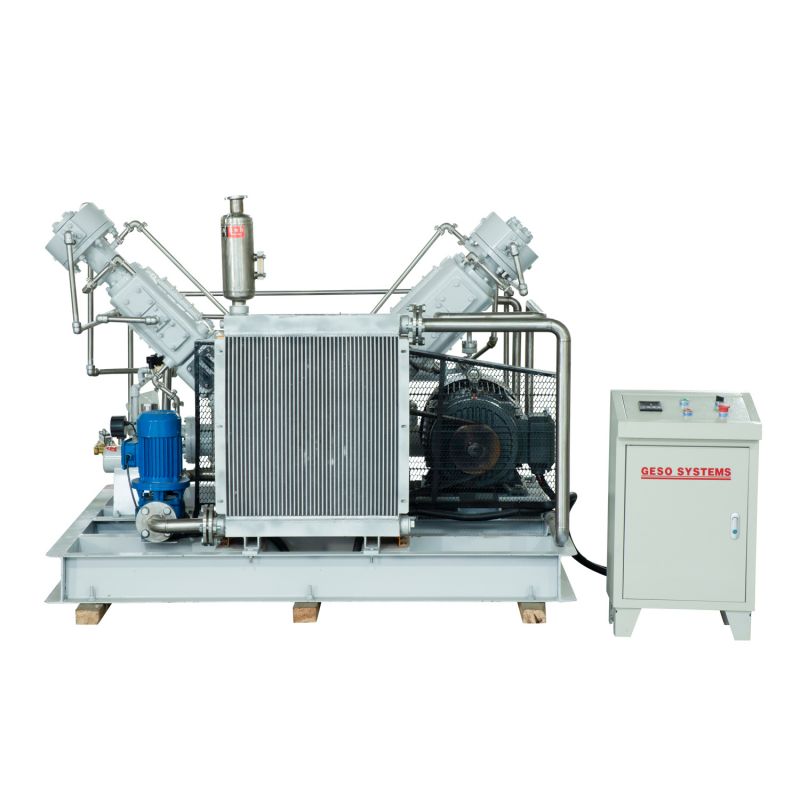Detailed description of Diesel portable Air Compressor
2024-06-28
A diesel portable air compressor is a versatile and robust machine designed to generate compressed air on the go, powered by a diesel engine. These compressors are widely used in various industries due to their mobility, reliability, and capability to operate in remote or off-grid locations. Here’s a detailed description:
Components and Design:
1. Diesel Engine:
- Power Source: The diesel engine provides the power needed to drive the compressor. It is chosen for its efficiency, durability, and ability to run for long periods.
- Fuel Tank: Designed to hold a sufficient amount of diesel fuel to allow the compressor to operate for extended periods without refueling.
2. Compressor Unit:
- Air End: This is the core component where air is compressed. It can be a reciprocating piston type, rotary screw, or vane type.
- Intercoolers and Aftercoolers: These components help to cool the air between stages of compression (intercoolers) and after the final stage of compression (aftercoolers) to reduce moisture and improve efficiency.
3. Air Intake System:
- Filters: Ensure that the air entering the compressor is clean and free of dust and debris, which can cause wear and tear on internal components.
4. Cooling System:
- Radiator and Fans: These components are essential for keeping the diesel engine and compressor unit at an optimal operating temperature.
5. Control Panel:
- Instrumentation: Includes gauges, meters, and digital displays to monitor parameters such as pressure, temperature, and fuel level.
- Controls: Allow the operator to start, stop, and regulate the compressor’s performance.
6. Lubrication System:
- Oil Pump and Reservoir: Ensure that moving parts are adequately lubricated to reduce friction and wear.
- Filters: Maintain the cleanliness of the oil, preventing contaminants from damaging the engine and compressor.
7. Air Storage and Distribution:
- Receiver Tank: Temporarily stores compressed air and helps to even out pressure fluctuations.
- Valves and Hoses: Allow the compressed air to be directed to various tools or equipment as needed.
8. Chassis and Frame:
- Trailer or Skid Mounted: Provides mobility and ease of transport. Trailer-mounted units typically come with wheels and a hitch for towing, while skid-mounted units can be lifted and moved by forklifts or cranes.
Types of Diesel Portable Air Compressors:
1. Single-Stage Compressors: Compress air in one stage, typically used for lower pressure applications.
2. Two-Stage Compressors: Compress air in two stages, suitable for higher pressure applications.
3. Oil-Free Compressors: Designed for applications where oil contamination must be avoided, such as in food processing or pharmaceuticals.
Applications:
1. Construction: Powering pneumatic tools like jackhammers, nail guns, and sandblasters.
2. Mining: Supplying air for drilling, blasting, and ventilation.
3. Oil and Gas: Used for pipeline testing, well servicing, and rig operations.
4. Manufacturing: Providing air for various machinery and tools.
5. Agriculture: Powering irrigation systems, grain handling equipment, and maintenance tools.
6. Emergency Services: Used by fire and rescue teams for operating tools and equipment in remote locations.
Advantages:
1. Mobility: Easy to transport to different job sites.
2. Independence: Does not rely on an external power source, ideal for remote locations.
3. Power: Capable of delivering high volumes of compressed air for demanding applications.
4. Durability: Designed to withstand harsh environments and continuous operation.
Considerations:
1. Maintenance: Regular maintenance is crucial to ensure reliability and longevity. This includes checking and changing oil, filters, and belts.
2. Fuel Consumption: Diesel engines are efficient but require regular refueling and proper management of fuel supplies.
3. Noise Levels: Diesel engines can be noisy, so consider noise reduction measures if operating in sensitive areas.
4. Emissions: Ensure compliance with local emissions regulations, especially for use in urban or environmentally sensitive areas.
Maintenance:
1. Daily Checks: Inspect oil levels, coolant levels, and fuel levels. Check for leaks or unusual noises.
2. Periodic Servicing: Replace air filters, oil filters, and fuel filters at recommended intervals. Check and adjust belt tension and replace as necessary.
3. Engine Maintenance: Follow the manufacturer’s guidelines for engine maintenance, including oil changes, valve adjustments, and fuel system cleaning.
4. System Checks: Regularly inspect the cooling system, intercoolers, aftercoolers, and lubrication system for proper operation.
Diesel portable air compressors are essential tools in many industries, providing a reliable and mobile source of compressed air for a wide range of applications. Their robust design and powerful performance make them ideal for challenging environments and demanding tasks.



